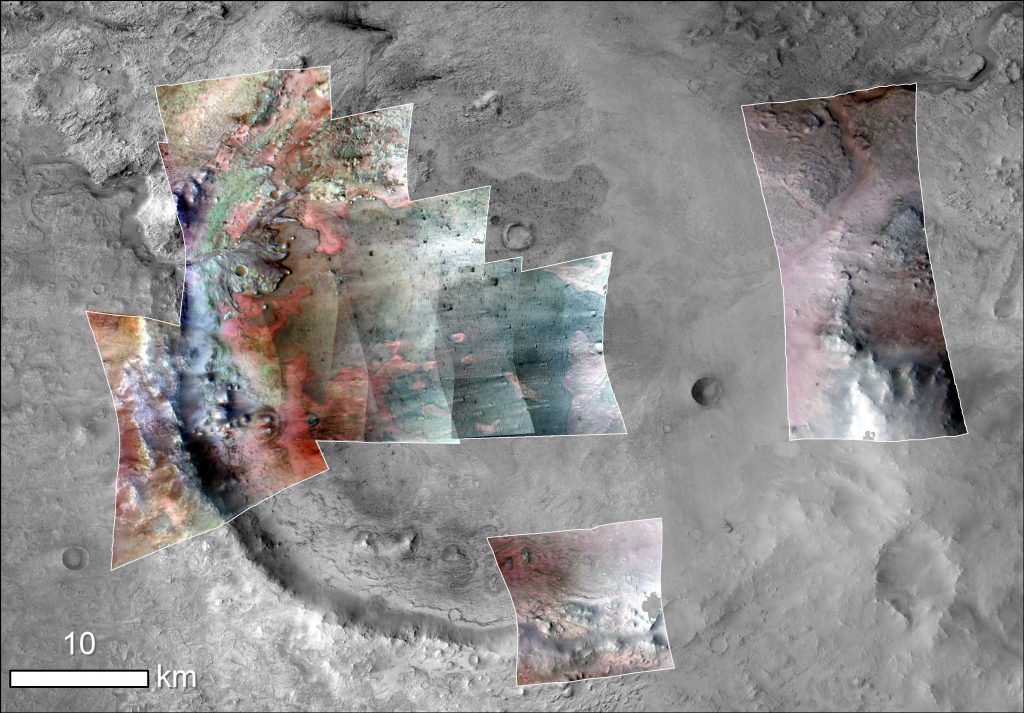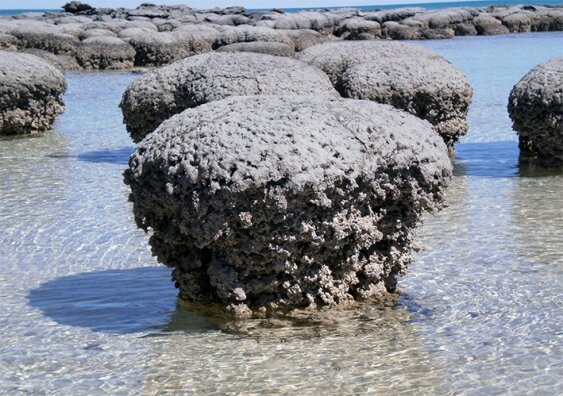How to differentiate potential biosignatures from abiotically produced materials on Mars?
By Fernanda Jamel
The arrival of the rover, Perseverance, on Mars carried with it many expectations for the potential detection of life beyond Earth. The rover, which arrived on the red planet on 18 February 2021, contains specific instruments for identifying and characterizing organic compounds and minerals of astrobiological interest. Altogether there are seven payloads (or scientific instruments). Some of them are the ones that interest us for the detection of mineral biosignatures, such as the SuperCam, which has a laser to detect the compounds or chemical elements in the soil, and it manages to capture this from a distance of up to 7 meters. In addition, we have the SHERLOC instrument (Scanning Habitable Environments with Raman & Luminescence for Organics & Chemicals), which is a UV Raman spectrometer, with the objective of detecting organic compounds and materials that would possibly lead to the finding of evidence of past life. Then there’s the instrument, PIXL (Planetary Instrument for X-ray Lithochemistry), which is an x-ray spectrometer instrument used to detect the associated elements in a given sample. SHERLOC and PIXL both have the capability of creating small maps of the materials under investigation, to also show changes over small scale distances.
A task for the Perseverance rover is to seek out biosignatures, which are the variety of chemical and physical materials that indicate a biological origin or process. However, the task of searching for potential biosignatures on Mars is quite challenging. For a compound or mineral to be characterized as a biosignature, it is necessary to keep in mind the processes that have formed and effected it. For instance, sometimes it is difficult to confirm whether a given mineral with good fossil-preserving potential, such as calcium carbonate (CaCO3), was formed by abiotic chemical processes or whether it was formed through the aid of microorganisms. Scientists can face such a challenge when rock or fossil records are incomplete due to erosion and the recycling of materials. Fossils of various forms can degrade physically and chemically, in a way that can alter the preservation and original properties that could lead to the understanding of their origins. To investigate the formation and changes to potential biosignatures, we need to verify biogenicity and know what abiotic processes could also form a potential biosignature. We also need to know what happens to potential biosignatures when they are altered in various ways.

Differentiating Mineral Samples Formed Biotically or Abiotically on Mars
Can we identify the potential biogenicity of a sample from Mars? This is a question Dr. Tanja Bosak’s (MIT) and her group are attempting to answer. For their work, it is necessary to carry out an extensive study of rocks and minerals in environments analogous to the Red Planet. With that in mind, researchers have been studying chemical and morphological traces from early Earth that can include microfossils and bio-sedimentary structures in either carbonate or siliciclastic rocks to better comprehend the process of formation of these structures.
With knowledge about the structures and chemical composition of minerals formed in specific environments, it is possible to make comparisons between minerals formed by non-biological processes (“abiotically”) and minerals formed with the help of microorganisms, such as those present in stromatolites. Jezero Crater, the exploration site of the Perseverance rover, contains an ancient river delta that has carbonate reserves that are of great interest to astrobiologists and might even harbor microfossils from early Mars. This site was chosen because it contains a great diversity of clay minerals and carbonates — clays contain hydrated silicates and carbonates may contain magnesium, both providing a good environment for the process of fossil preservation. This implies that Jezero Crater on Mars is a great target for looking for biosignatures or even storing information about potential prebiotic processes.

Thanks to the work of rovers such as Curiosity and Opportunity, along with other missions on the surface and in orbit, we’ve learned that Mars once had standing liquid water at its surface as well as other necessary ingredients for life as we know it, thus helping to pave the way for the arrival of “Percy” (a common nickname for Perseverance) and further exploration for signs of past or present life on Mars. Martian sedimentary rocks are older than similar rocks on Earth, so they are expected to have undergone fewer transformations. Thus, these rocks are extremely important as they provide the opportunity to study more preserved organic compounds. Therefore, it is important to study the biosignatures of the primitive Earth that preserve microbial fossils and organic matter such as structures similar to stromatolites or microbial induced sedimentary structures (MISS), thus making possible the identification and collection of samples by the Perseverance rover for the Mars Sample Return Mission in the coming years. One of the main objectives of the rover’s mission is to collect samples to be analyzed on Earth.
The Importance of Sample Return
Along with an impressive suite of instruments for exploring Jezero Crater, Perseverance will also begin the process of collecting and storing rock samples for later return to Earth by other missions. An important factor to justify the return of such samples is that the instruments present in the rover are sufficient to choose samples with good astrobiological potential, but bigger and more sensitive instruments are likely needed to confirm the potential biogenicity of anything within the samples. Some of the criteria for testing potential biogenicity are being developed by the scientific community, for example through meetings such as the recent NfoLD/NExSS Standards of Evidence for Life Detection Community Workshop, held 19-22 July 2021. Some instruments are being studied as potential approaches to analyze the mineral rocks from Mars Sample Return’s mission, such as X-ray spectroscopy that can be assessed at the nanometer scales and thus have a high resolution to interpret and evaluate traces of organomineral structures and investigate the potential biogenicity of the samples. Although the rover’s first attempt of sampling the martian rocks did not go as expected, the problem was assessed by NASA’s team and the next attempt was a success, with two collected samples that are now candidates for the return mission to Earth. However, it is a learning experience to understand the difficulties of collecting samples on another planet, and this shows that we have a lot to learn both on Earth in similar environments and on the Red Planet!
References:
- Bosak, T., Moore, K. R., Gong, J. & Grotzinger, J. P. Searching for biosignatures in sedimentary rocks from early Earth and Mars. Nat. Rev. Earth Environ. 0123456789, (2021).
- Javaux, E. J. Challenges in evidencing the earliest traces of life. Nature 572, 451–460 (2019).
- Searching for Life in NASA’s Perseverance Mars Samples
- NASA’s Mars 2020 Will Hunt for Microscopic Fossils
- Assessing Perseverance’s First Sample Attempt
Fernanda Jamel is a BMSIS research associate working for Dr. Milena Popovic. She recently graduated in Biology and is currently a PhD student at the University of São Paulo (Brazil), working with bioprecipitation of carbonate minerals.
